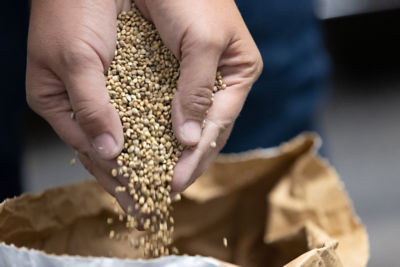Causal Agent
Sclerotinia sclerotiorum
Distribution
Worldwide
Symptoms
All cucurbits are susceptible to sclerotina stem rot. This fungus is able to infect stems at the soil level, as well as leaves and fruit above ground. The first sign of disease is a white, cottony growth on infected tissue. As the disease progresses, the plant gradually turns yellow and may die. When an infected stem is cut open, white mycelium may be seen in the pith along with large (6–12 mm) black sclerotia. Upon infection, fruit may be colonized by the white mycelium of Sclerotinia sclerotiorum and quickly become soft and watery.
 Sclerotinia sclerotiorum stem of squash.
Sclerotinia sclerotiorum stem of squash.
Conditions for Development
The fungus can survive in soil for many years as sclerotia. These overwintering structures can infect plants by producing mycelium and forming apothecia, which release ascospores. The disease develops under cool to moderate temperatures and humid conditions. Prolonged periods of leaf wetness (12–24 hours) are optimal for disease development. The fungus has an extremely wide host range of over 500 species of plants.
Control
Implement good cultural practices such as a three- to five-year crop rotation with non-hosts (corn, wheat, and sorghum), sanitation and deep plowing after a crop to help reduce this disease. In addition, careful irrigation management may minimize disease occurrence. Soil application of a biological control agent (i.e., Coniothyrium minitans) has been shown to reduce populations of viable sclerotia in the top two centimeters of soil. Application of fungicides has been shown to help control Sclerotinia stem rot. Soil fumigation is usually an effective method of control in greenhouses.



